Zebrafish species
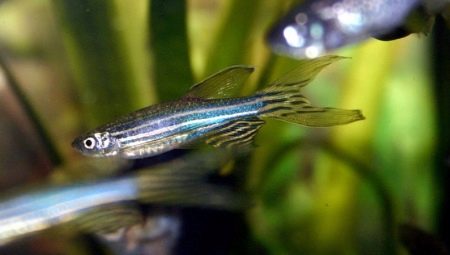
The zebrafish is very fond of aquarists all over the world. And this is not surprising - with its external attractiveness and decorativeness, the zebrafish is absolutely unpretentious, even a beginner can take care of it. From our article you will find out what types of fish exist, how to choose them correctly, as well as all the nuances of keeping a fish at home.
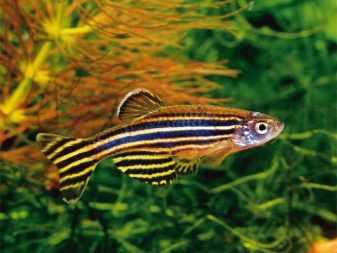
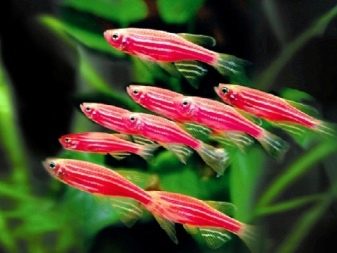
Danio rerio and its varieties
Most often, you can find zebrafish or striped zebrafish in aquariums. It was first described in 1822, when the natural features of the colonies of England, located in the territories of modern Pakistan and India, were studied. Zebrafish lived in the rivers of these countries, and their range spread to southeast Asia - to Myanmar. Danio rerio prefers shallow water bodies: lower reaches of rivers, channels, ponds and even grooves. In the rainy season, these fish swim to flooded rice fields, spawn there, and after that, together with the young, return to their usual habitat.
The appearance of the zebrafish: a small (up to 7 cm long) fish with a narrow body, as if compressed on the sides. The colors of the classic rerio are longitudinal ink-blue stripes overlapping the caudal and anal fins, against a silvery or light yellow background. The zebrafish has many varieties, both naturally and artificially bred. Interestingly, representatives of these subspecies are capable of interspecific crossing, which contributes to the birth of unique offspring and blurring of breed boundaries.
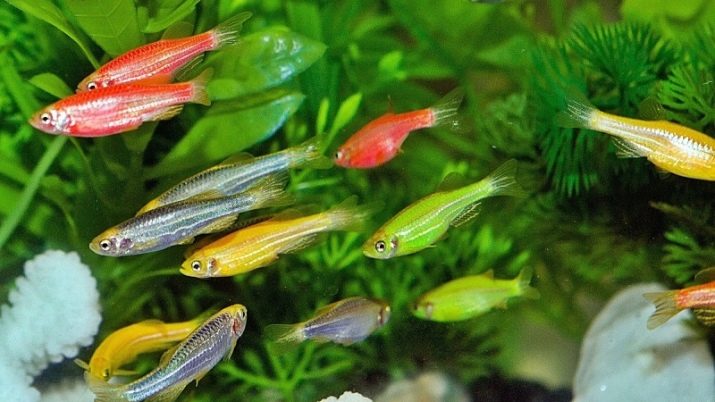
Let's list the most famous varieties of zebrafish.
- Veil. Veil-like lateral, pelvic and dorsal fins are characteristic.
- Cherry. In terms of color, it does not differ from the classic zebrafish, but it was singled out as a separate subspecies for a special color scheme - dark purple stripes on a pinkish body.
- Leopard print. From the name it is clear that spots have replaced the stripes in this variety. The general background is greenish-nacreous, the spots are dark, the fins are also variegated.
- Albino. It is characterized by a bright pink carcass color and red eyes.
- Glofish (GloFish). This subspecies deserves to be told in more detail. The fact is that the concept of glofish itself refers not only to zebrafish - it is a generalized, internationally patented, commercial name for genetically modified aquarium fish with a fluorescent genome taken from corals and jellyfish introduced into them. So ordinary fish became luminous.

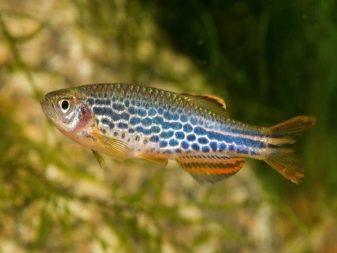
Danio rerio were the pioneers in this experiment. Holders of the coral genome - RFP - emit neon red light under UV irradiation, those who have been implanted with the jellyfish gene (GFP) - green. Individuals that have been "mixed" with both genomes glow yellow.
The most popular colored zebrafish glofish are Electric Green, Sunburst Orange, Cosmic Blue, and the stunning Galactic Purple.

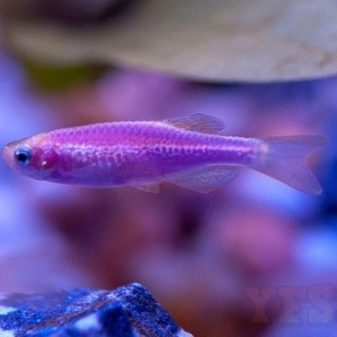
Other aquarium species
In addition to the zebrafish, there are other interesting varieties of this cute aquarium fish. Let's get to know them.
Pearl
It has an elongated body, flattened at the sides, about 6 cm long. On the lips, you can see 2 pairs of small mustaches. The color of the fish is silver-blue or greenish-pearl. From the caudal fin almost to the middle of the body, a light pink wedge-shaped strip with a blue edging looms. The younger the pearl zebrafish, the more striking this pattern will be. In older individuals, on the contrary, it turns pale and may, in general, disappear.
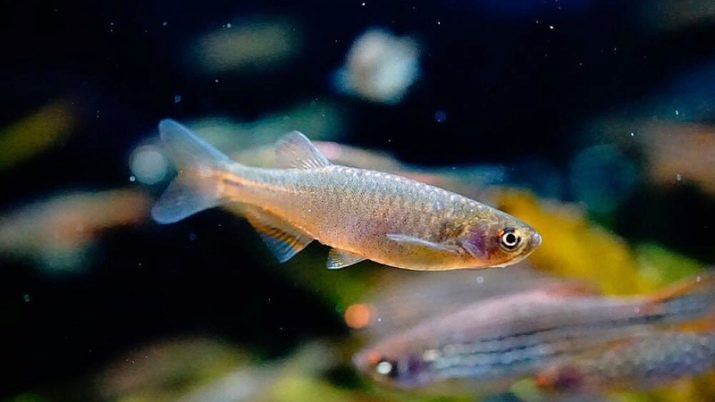
Burmese
Not a very prominent zebrafish. Fans of aquarium hobbyists found out about it only in 2005, although the subspecies was described in 1937. There is no specific pattern on the body; scales, depending on the lighting, can shimmer with a silvery, golden and even steel color.
A distinctive feature of the Burmese zebrafish is its jumping ability, so it is necessary to cover the container with these fish with a glass lid so that they do not jump out of the water.
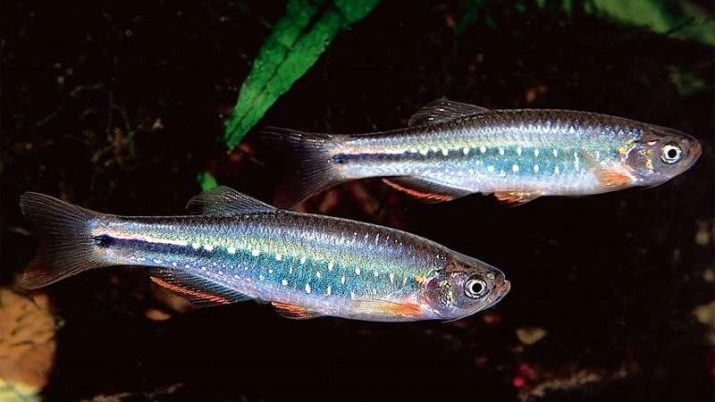
Malabar (devario)
It has an interesting color: greenish back, sides and abdomen are silvery-green, on the body there are longitudinal stripes of bright turquoise, edged with orange. Closer to the caudal fin, these stripes merge. The fins of the devario zebrafish can be either yellowish-gray or red-orange in color.
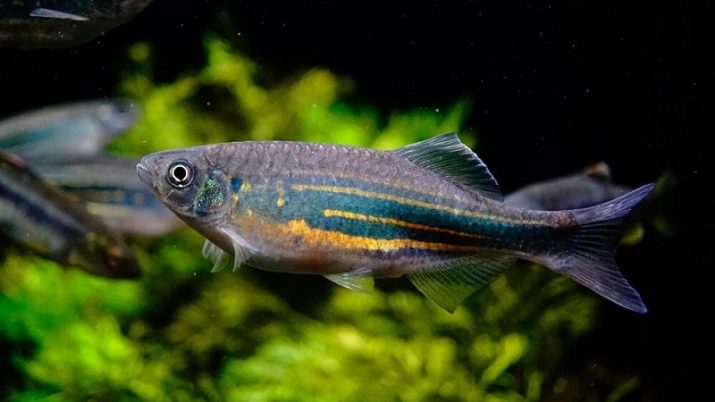
Bengal
This specimen has a higher back than other zebrafish species, so it seems more rounded. The Bengal colors are as follows: from above there is a golden hue, smoothly turning into bluish green, and then again into gold. A yellow "ray" extends from the tail to the middle of the carcass, giving way to an accumulation of shapeless specks.

Whiskered
The name speaks for itself: the characteristic feature of the mustachioed zebrafish is the elongated mustache hanging from the lower lip. The color of this fish is rather dull: a silvery-nacreous background, on which barely noticeable stripes and spots are visible. There is a single dark, rounded spot near the operculum. The size of the mustachioed zebrafish is from 6 to 13 cm.
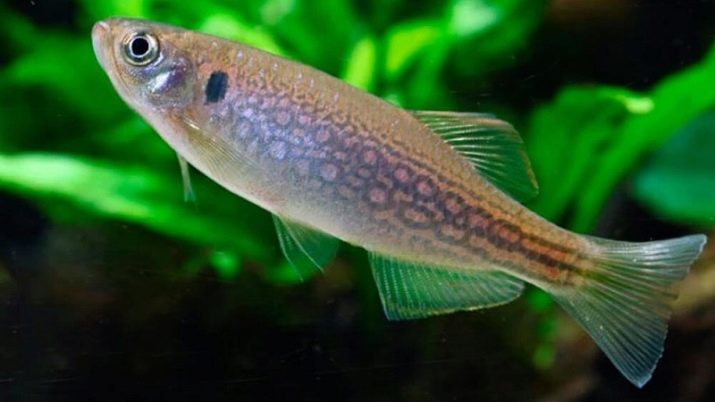
Spot (black band)
Two variations of the name of this species give us an idea of the appearance of the fish: on its sides there are black stripes, which are separated by a white lateral line, and exactly under them a series of black spots runs parallel.
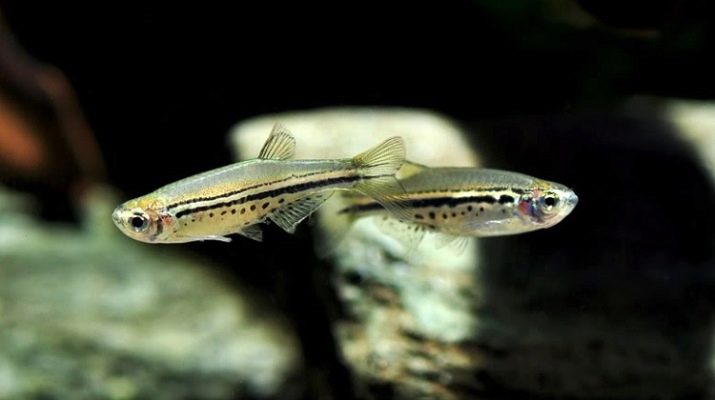
Erythromicron (emerald)
A very interesting representative. Its "striping" is not longitudinal, but transverse. The stripes are colored emerald blue and orange-gold. The pelvic and anal fins, as well as the "cheeks" are red. There is a bright black spot at the base of the tail.
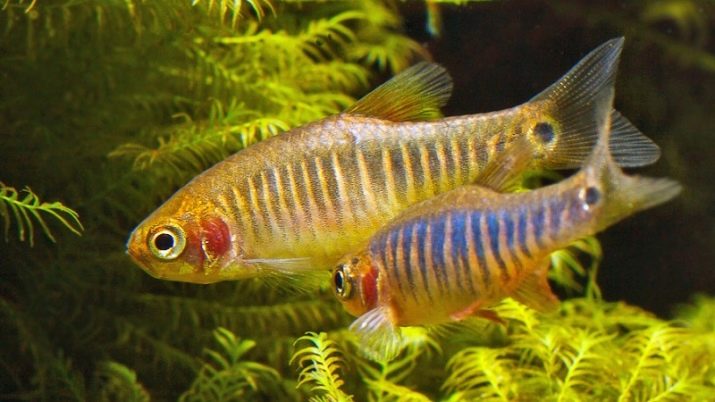
Orange fin
It is logical to assume that the dominant role in its appearance is played by fins, on which orange stripes are clearly visible. They are also present on the body, alternating with dark blue.
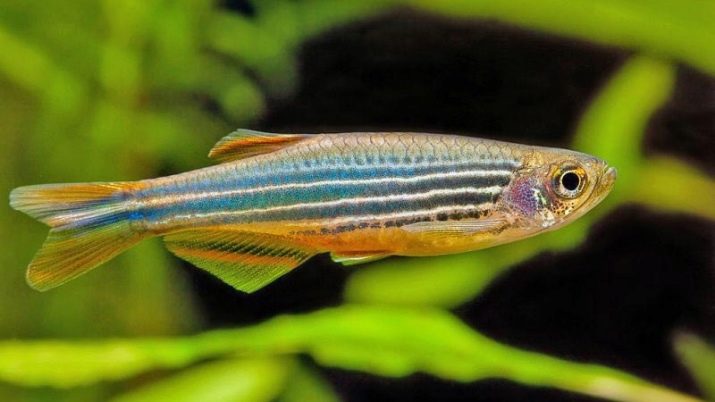
Pink
The color of this zebrafish is simply unrealistically beautiful. By the way, breeders took part in the breeding of the breed, who were able to artificially achieve such a richness of color - in the wild, pink zebrafish still looks more modest.
The color of the representative ranges from coral to fuchsia (its intensity can be influenced by special food). On the sides there are thin white longitudinal stripes; the fins are also striped, but transparent.
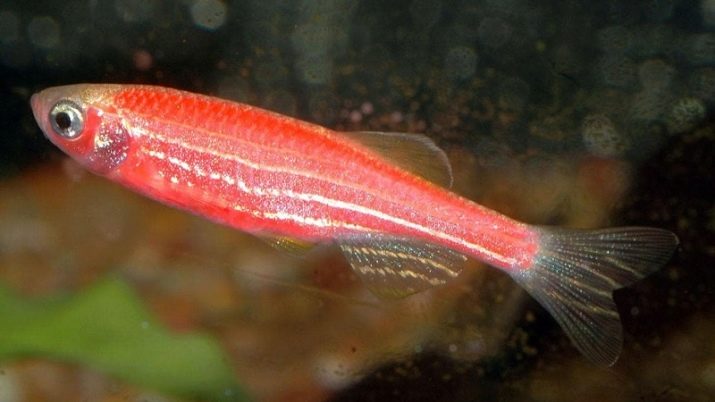
Blue
And again in front of us is a fish, striking in its bright color. The electric blue body is crossed by golden stripes running along the sides from the gills to the tail. The eyes are radiant, golden. The fins are transparent and have a yellowish-green tint.
Now we are talking about males - female blue danios are much more modest, they are grayish-blue with barely noticeable stripes on the sides.

Margaritatus
Another name is galaxy micro-collection. It is easy to understand why it was so named just by looking at its color: “stars” - bright yellow spots - are chaotically scattered over the gray-green background of the calf. The abdomen of the galaxy is orange-red, with stripes of the same color on the fins.
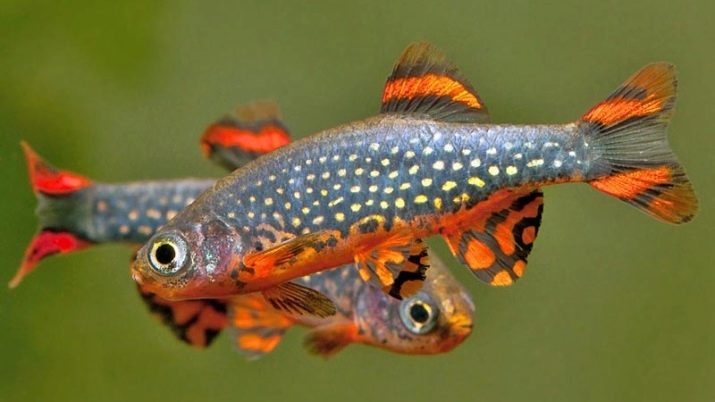
Khopra (firefly)
The baby among the zebrafish is only 3 cm long! The shades on the body of this zebrafish form overflows from turquoise to orange and from gold to silver. Transverse stripes are visible on the sides.
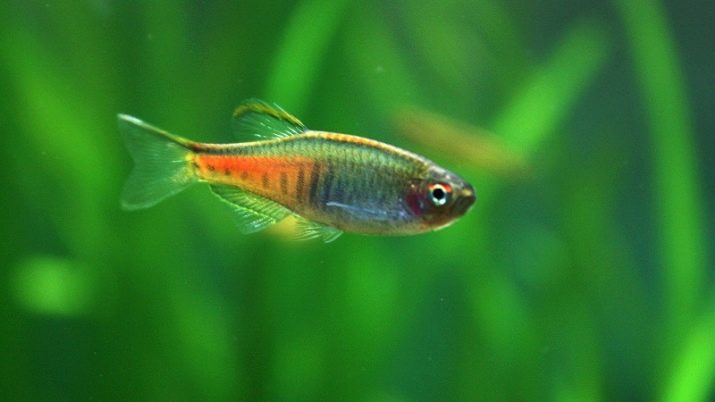
Golden rings (tinny)
Another miniature representative of the zebrafish - its height is 2-3 cm. Tinvinie color is a mass of black spots of various sizes, enclosed in gold "rims". The transparent fins also have specks.

Gates
The story about the species of zebrafish ends with a fish that was previously mistakenly referred to as rasbora, and was given the name golden rasbora. Danio Gates is very small in stature - up to 2 cm, therefore, so that he does not "get lost" among the larger species of fish, it is better to populate them in a nano-aquarium in a flock of 8-12 individuals. Appearance: narrow, thin body, large eyes, golden color, a thin turquoise line runs from the tail to the middle of the carcass.
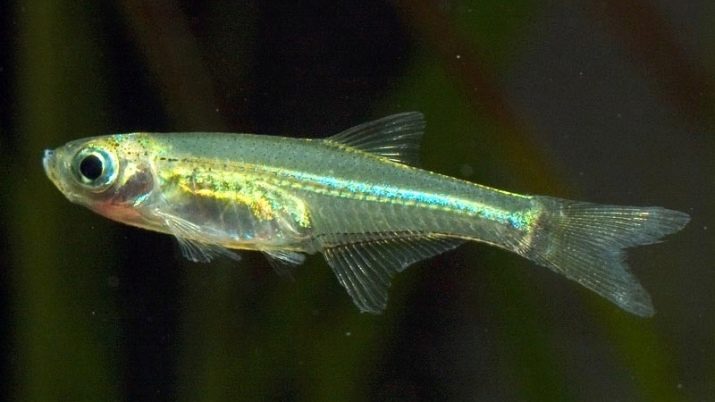
How to choose?
The choice of inhabitants for your aquarium should be approached with all responsibility - there are many cases when an illiterate approach forever discouraged a beginner from engaging in aquarium hobby, since the pets did not reproduce and quickly died. So what are the nuances to consider when choosing a zebrafish - let's figure it out.
- Danio is a schooling fish. She will not live alone. So choose a minimum of 6 zebrafish when filling your tank.
- When filling your tank with underwater plants, make sure there is enough room to maneuver. Danios are quite agile and enjoy swimming and frolicking in the upper level of the aquarium - try not to get in the way of any floating leaves.
- If your choice fell on the veiled zebrafish, do not add aggressive fish (in particular, barbs) to them, which love to eat up their beautiful fins.
- Some species of zebrafish are prone to jumping out of the tank, so make sure the container is covered with glass.
- Now for the feeding. In principle, these fish are omnivorous and love both live and dried, as well as frozen food. But the best solution would be food in the form of flakes, which do not sink, but remain in the trough - from there the zebrafish will be happy to "snatch" them.
- Now let's talk about the "neighbors". If you are attracted by an interspecific aquarium, and you have chosen several zebrafish as residents, then you can fearlessly add neons, tetras, rasbora, corridors, thorns, minors and, of course, other zebrafish to them.
But any cichlids, like goldfish, can consider zebrafish prey, and then you will soon be surprised to find their complete absence in the aquarium.
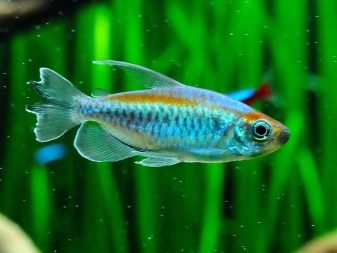
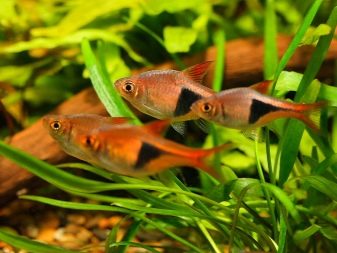
Interesting facts about zebrafish are waiting for you in the next video.








